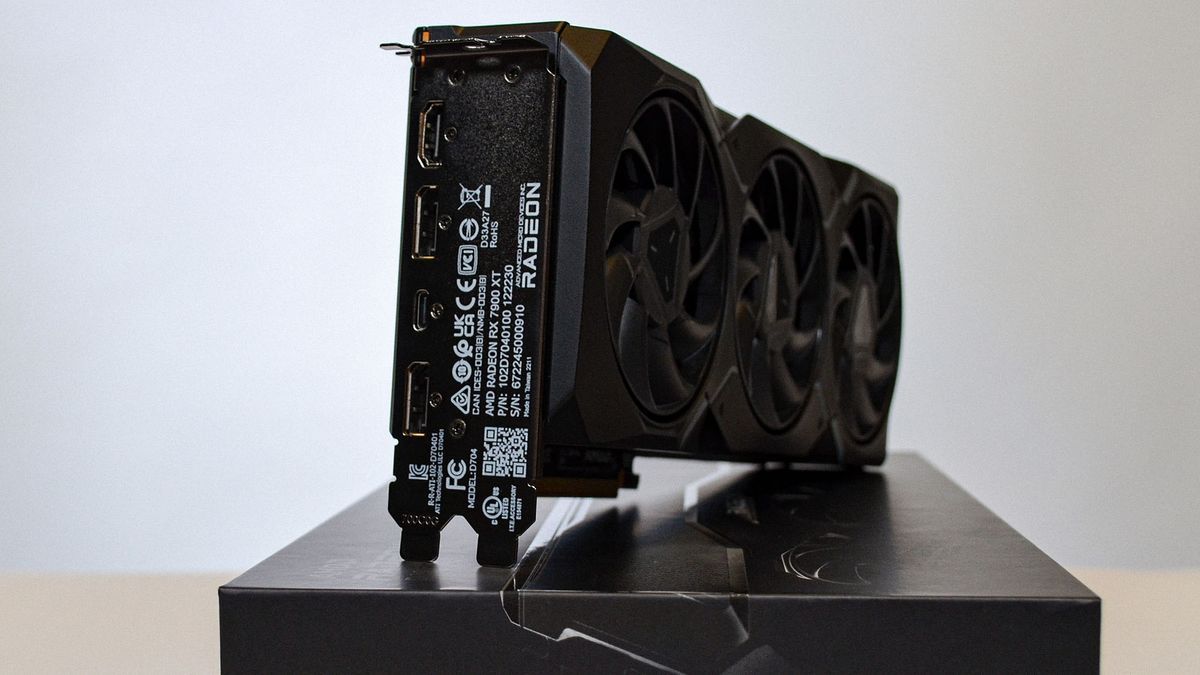It looks like AMD's RDNA 4 GPUs are really going to revolutionize the graphics card market when they arrive; The problem is that Team Red may not want to make those waves this year.
We just watched a video full of new rumors and theorizing about AMD's next-gen graphics cards from Moore's Law is Dead (MLID), although we should note that much of the published spec information has already been mentioned by the leaker from YouTube.
However, as a quick recap, speculation (from MLID and elsewhere as well) is that for RDNA 4, AMD will go mid-range and have Navi 48 and Navi 44 chips. So, there will be no high-end GPUs this time (like RDNA 3's current flagship RX 7900 XTX).
The new spec information that MLID imparts here is that with these RDNA 4 GPUs we can expect clock speeds of around 3 GHz to 3.3 GHz, and that on the memory front, we won't be getting GDDR7; AMD will probably use 20Gbps GDDR6 for these next ones. generation graphics cards.
The most telling performance prediction is how these GPUs will stack up against Nvidia's current Lovelace lineup and AMD's current-gen offerings. We're told that the beefier Navi 48 should be somewhere between the performance of the 7900
That means this GPU should be equal to the outgoing Nvidia RTX 4080 or, at best, it could be a rival for the RTX 4080 Super (add a lot of seasoning to this, of course).
With the lower-end Navi 44 graphics card, we're looking at performance between an RX 7600 XT and a 7800 XT (again for rasterization), so we can expect roughly the equivalent of a 7700 or a killer RTX 4060 Ti, as MLID says).
If this all sounds a little disappointing, the real key here will, of course, be the value proposition. AMD is going to make the price/performance ratio more compelling (this is the core idea with RDNA 4) and we can expect some temptingly priced GPUs with a great chance of making it onto our list of the best graphics cards.
In fact, MLID maintains that the worst-case scenario is that AMD's Navi 48 offering provides the performance of an RTX 4070 Ti Super for a few hundred dollars less than what Nvidia charges for this new GPU. As mentioned, the best-case scenario could be an RTX 4080 Super equivalent, theoretically at something like half the price.
However, the probability is somewhere in between, but in short, these RDNA 4 graphics cards will really punch above their weight in terms of value for money in the mid-range. MLID sums it up as a 30% increase in price/performance across the board for AMD's next-generation GPUs.
Note that we're talking exclusively about rasterization performance here, and MLID doesn't have any specifics with ray tracing slices. MLID says we can expect some improvements in RDNA 3 with ray tracing (obviously that should be the case), but AMD still won't match Nvidia. Apparently, it won't be until RDNA 5 that the Red Team really pushes hard with ray tracing.
However, what could be the real disappointment here is that we could be in for a longer-than-expected wait for these next-gen GPUs from AMD. Let's discuss this a little more in the next section.
Analysis: Did you forget the rumored 2024 launch?
MLID has turned to some of its best sources for information on the RDNA 4 release date, and those experts have different stories to tell in many ways. A source says that progress on driver development is going very well and that a launch is expected in the third quarter of 2024, as previously rumored.
The other sources indicate that AMD may be able to release RDNA 4 this year, perhaps in the third or fourth quarter, but that Team Red could wait until early 2025. Why? For two main reasons…
First of all, Nvidia is supposed to only have the RTX 5090 at the end of 2024 and no other Blackwell graphics cards until 2025. Therefore, there will be no rival for the Navi 48 until next year and there will be no need to respond to the 5090, which be Well out of the RDNA 4 league.
The other reason is that AMD's current-gen RDNA 3 graphics cards are selling well, and releasing RDNA 4 this year could cannibalize those sales. So if AMD can get more out of sales of the RX 7900, 7800, and 7700 series graphics cards, why couldn't it, without pressure from Nvidia?
As long as RDNA 3 sales remain strong for AMD through the middle of this year and beyond, and the price cuts seem to keep the drive shift momentum going well, we see no reason why the Red Team wouldn't prefer to do so. Keep RDNA 4 behind the scenes, given the overall state of the GPU market and Nvidia's likely release times.
This is just a theory, and AMD may still opt for a later launch in 2024, especially if Nvidia's launch plans change or the GPU power balance changes in other ways. But from the picture that is currently being painted, we are thinking more about the fourth quarter than the third quarter at the moment, if RDNA 4 appears this year, and it may not, reading between the lines…








